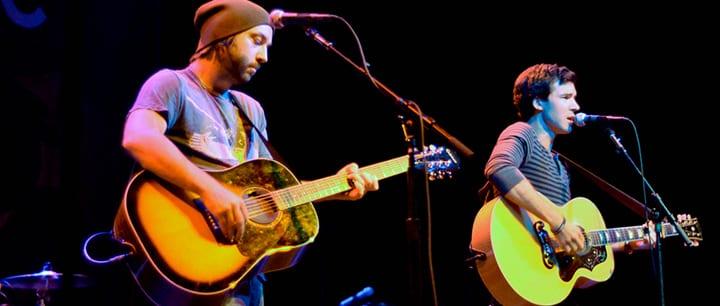 Anyone who has followed or studied the progress of the SF music scene over the years knows that it’s an extremely eclectic one. Bands from all kinds of genres have made their home in San Francisco, and many of them have made it big. Read on to learn about several events that helped shape the scene over the years and made San Francisco music what is it today:
Anyone who has followed or studied the progress of the SF music scene over the years knows that it’s an extremely eclectic one. Bands from all kinds of genres have made their home in San Francisco, and many of them have made it big. Read on to learn about several events that helped shape the scene over the years and made San Francisco music what is it today:
1. Jazz and Blues in the Fillmore District
During the 1950s, the Fillmore District was a mecca for jazz and blues. Jimbo’s Bop City was one of the most important venues of the time, playing host to acts such as Ella Fitzgerald and Miles Davis, which made a huge difference to the way music was played and appreciated in the city, as jazz and blues became more acceptable to the mainstream and were no longer seen as subversive. Blues is said to be the basis for all modern rock music, so it’s possible that without the venues in the Fillmore District, the “San Francisco Sound” would never have developed (more on this style below). Jazz and blues continue to be popular in the SF music scene today, with venues such as Biscuits and Blues and Savanna Jazz leading the way.
2. Mime Troupe Benefit at the Fillmore Auditorium – December 10, 1965
One of the first great popular music scenes to come out of SF was what’s now referred to as the San Francisco Sound. The San Francisco Sound was groundbreaking at the time and combined a number of influences, including jazz, funk, soul and rock ‘n’ roll, which created a psychedelic sound. Bands belonging to this movement mainly came from the Haight-Ashbury district and were associated with the hippie movement.
One of the defining moments of this movement was the show at the Fillmore Auditorium on December 10, 1965, when a number of young bands (who would later go on to be stars of the scene) played together. This was the Grateful Dead’s very first show under that name (they had previously been known as The Warlocks), and they played with a number of other bands, including Jefferson Airplane and The Great Society.
3. The Formation of the Dead Kennedys
While the Dead Kennedys may not have have been the first punk band in San Francisco, they were probably the most influential on the SF music scene in the late ’70s and early ’80s, when they started an influx of punk in the area. Their sound started out following a more traditional punk style, but soon morphed into hardcore punk. This proved to be an inspiration to a number of other SF bands, and a fairly decent hardcore punk scene arose, featuring bands such as Flipper, Whipping Boy, and Crucifix.
4. Metallica Moving to San Francisco
Although Metallica started out in LA in 1983, they decided to make the move to San Francisco. LA’s loss was a gain for the SF music scene because it helped encourage the burgeoning thrash scene in the city. We all know that Metallica went on to become a household name, but other popular thrash bands from the Bay Area include Death Angel and Testament. While the scene may have died down in the early ’90s, ex-members of some thrash bands went on to form new bands and popularize other genres, such as groove metal.
5. Modern Punk
By the mid-1980s, bands such as Dead Kennedys had all broken up and some people felt like the punk movement was dead. However, San Francisco proved that punk hadn’t died, but had merely been taking a nap, when bands such as the Swingin Utters and Jawbreaker became popular. The East Bay punk movement also helped to shape the SF music scene, as a lot of the East Bay bands frequently played in the city, at venues such as Club Cocodrie and in front of the 16th and Mission BART station, and influenced bands from the city. This SF music scene was a precursor to some of the hardcore and emo movements that came about in ’90s and early 2000s.
Jill Cole
